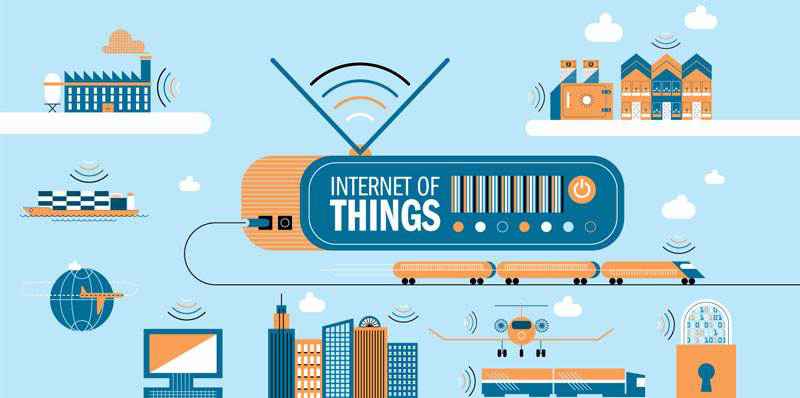The financial technology, or FinTech, sector is no stranger to disruption. From the rise of digital payments to the advent of blockchain, innovation has been a constant driving force. Now, a new wave of transformation is underway, powered by the pervasive connectivity and data-generating capabilities of the Internet of Things (IoT). This interconnected network of devices, from wearables and smart home appliances to industrial sensors and connected vehicles, is poised to revolutionize how we interact with financial services, creating a future that is more personalized, efficient, and secure.
Personalized and Proactive Financial Services:
Imagine a world where your financial services anticipate your needs. IoT devices are making this a reality by providing a continuous stream of data about your daily activities, spending habits, and even your health.
- Personalized Insurance: Wearable fitness trackers can provide insurers with real-time data on your activity levels and vital signs. This allows for dynamically adjusted premiums based on actual healthy behavior, rewarding individuals for taking care of themselves. For example, if you consistently meet your step goals, your health insurance costs could decrease.
- Smart Budgeting and Spending Insights: Smart home devices and connected cars can offer insights into energy consumption and transportation costs. This data, combined with your transaction history, can provide a holistic view of your spending patterns, enabling more accurate budgeting and personalized financial advice delivered directly to your smart devices. Imagine your smart speaker alerting you that your electricity bill is unusually high this month based on its monitoring.
- Tailored Investment Advice: By understanding your lifestyle, spending habits, and risk tolerance through IoT data, financial advisors can offer more personalized investment recommendations. For instance, data suggesting an interest in sustainable living could lead to recommendations for green investment opportunities.
Enhanced Efficiency and Automation:
IoT is also streamlining financial processes, making them more efficient and less prone to human error.
- Automated Payments: Connected vehicles can automatically pay for tolls and parking, while smart refrigerators could reorder groceries and automatically process the payment. This seamless integration of financial transactions into everyday objects simplifies our lives and reduces the need for manual intervention.
- Streamlined Lending and Credit Assessment: Data from various IoT devices can provide a more comprehensive view of an individual’s creditworthiness beyond traditional credit scores. For example, consistent on-time payments for utilities managed through smart home systems could be factored into credit assessments.
- Efficient Back-Office Operations: In the financial industry itself, IoT sensors can monitor the conditions of physical assets, optimize energy consumption in branches, and enhance security through smart surveillance systems. This leads to reduced operational costs and improved efficiency.
Bolstering Security and Fraud Prevention:
While connectivity brings convenience, security is paramount in the financial world. IoT offers innovative solutions to enhance security and combat fraud.
- Biometric Authentication: Smart devices equipped with biometric sensors, like fingerprint scanners or facial recognition, can provide more secure authentication methods for financial transactions, reducing the risk of unauthorized access.
- Real-time Fraud Detection: By analyzing patterns in device usage and location data, financial institutions can identify and flag suspicious activities in real-time. For instance, an unusual transaction occurring far from your connected devices’ typical location could trigger an immediate alert.
- Secure Supply Chains: In trade finance, IoT sensors attached to goods in transit can provide real-time tracking and condition monitoring, reducing the risk of fraud and ensuring the integrity of the supply chain.
Challenges and Considerations:
Despite the immense potential, the integration of IoT in FinTech also presents certain challenges:
- Data Privacy and Security: The vast amounts of personal data generated by IoT devices raise significant concerns about privacy and security. Robust frameworks and regulations are needed to ensure data is handled ethically and protected from breaches.
- Interoperability and Standardization: The lack of universal standards for IoT devices and platforms can hinder seamless integration and data exchange between different systems.
- Infrastructure and Connectivity: Reliable and high-speed internet connectivity is crucial for the widespread adoption of IoT in FinTech, particularly in remote areas.
The Road Ahead:
The convergence of IoT and FinTech is still in its early stages, but its transformative potential is undeniable. As technology continues to evolve and these challenges are addressed, we can expect to see even more innovative applications emerge. From hyper-personalized financial advice delivered through augmented reality glasses to blockchain-enabled IoT devices facilitating secure peer-to-peer transactions, the future of FinTech, shaped by the Internet of Things, promises a more connected, efficient, and user-centric financial experience. The key lies in harnessing the power of this interconnected world responsibly and securely to unlock its full potential for the benefit of individuals and the financial industry as a whole


